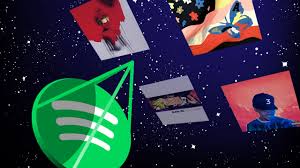Spotify’s algorithm for musicians
Let us get technical…
Spotify’s algorithm uses an AI system called BART (abbreviation for Bandits for Recommendations and Treatments).
BART’s main job is to keep listeners on the line.
It plays and suggests songs that it is familiar with. Then it drops in new tracks it thinks they might enjoy but have never heard of before.
This keeps the listener engaged and ensures that things don’t get boring.
BART uses 3 functions to decide what to recommend to listeners:
NATURAL LANGUE PROCESSING
Analyzes the lyrics, language and content of a song.
RAW AUDIO ANALYZATION
An audio song’s “vibe” and “mood” can be detected. It will determine whether the song is upbeat, chilled, heavy, minimal, instrumental, etc.
COLLABORATIVE FILMING
To determine what songs will most appeal to them, compare new songs with listeners’ current listening habits.
That’s it. The tech behind Spotify algorithm.
How can artists, bands and labels plan their releases so that the algorithm works in their favour and reaches more listeners?
We will discuss the main methods to suggest tracks to fans via algorithmic playlists, daily mixes and other suggestions.
It’s All About The Stats
Like other social media platforms like Facebook, Spotify’s algorithm is based on statistics. Spotify monitors how users interact with different music to provide more content.
Spotify is always looking – and learning!
When recommending songs for users, the algorithm considers a lot of stats.
The following are important stats about Spotify’s algorithm:
– Listening history (mood style, genre, etc.)
Skip rate (less skips = better recommendations)
– Listening time (getting beyond 30 seconds is important)
– Playlist features (inclusions across any personal, indie and official playlists).
The Spotify-friendly Rule 30 Seconds
Spotify values the first 30 seconds of any track more than any other.
Listeners who listen to your track for more than 30 seconds will be able to identify positive data. This is also the point where a stream can be monetized.
It is controversial to make a track Spotify-friendly to please the algorithm. Are you willing to compromise your creativity to reach more playlists? It’s up to each of you.
Timing is key
The first 12 to 24 hours following your release are crucial. Listeners spikes, skip rates, low and listening time are all important in the first day/days of the following release.
You can see why timing matters. In the lead up to your release, create hype. Your fans should be excited about your song in the lead-up to it.
Algorithmic playlist hacks
Your stream count can be greatly increased by submitting your music to Release Radar and Discover Weekly. They receive more streams than other playlists.
They are algorithmic playlists that are tied to each user’s listening habits.
Your followers are the only thing that determines Release Radar. Your new music will be available on the release radar if someone follows your Spotify profile.
You can increase your chances of landing on Discover Weekly by leveraging the power of your family, friends, and fanbase.
Spotify’s Discover Weekly algorithm takes into account every playlist. Get everyone you know to make your track number one in their playlists.
Use tags and pitch for Spotify playlists for Artists
Register now if you don’t already use Spotify for Artists. Let me give you a moment… okay back? Good.
Submitting your Spotify playlists directly and tagging your tracks on Spotify for Artists will help you determine who they are recommended to and which playlists they would suit.
These meta tags include mood, genres etc. They can be labelled incorrectly and will appear to the wrong people. Skips made before the 30th second of a track are bad news for the algorithm.
Spotify is social media in disguise.
Spotify might not be what you think, but it is a social media platform!
It connects artists and fans, and it uses large amounts of user data to give listeners what they want.
Spotify is only one piece of the social media puzzle. Every social platform is a part of the larger picture. When your track drops, be sure to point your links to Spotify.
It’s a great idea to bring people in from another social platform.
Your profile matters
Spotify is all about getting users to visit your profile, click on your links, and follow you.
There is so much information you can put on your profile to engage fans. This includes photos, bios, social links, and information about upcoming gigs. Don’t hesitate!

